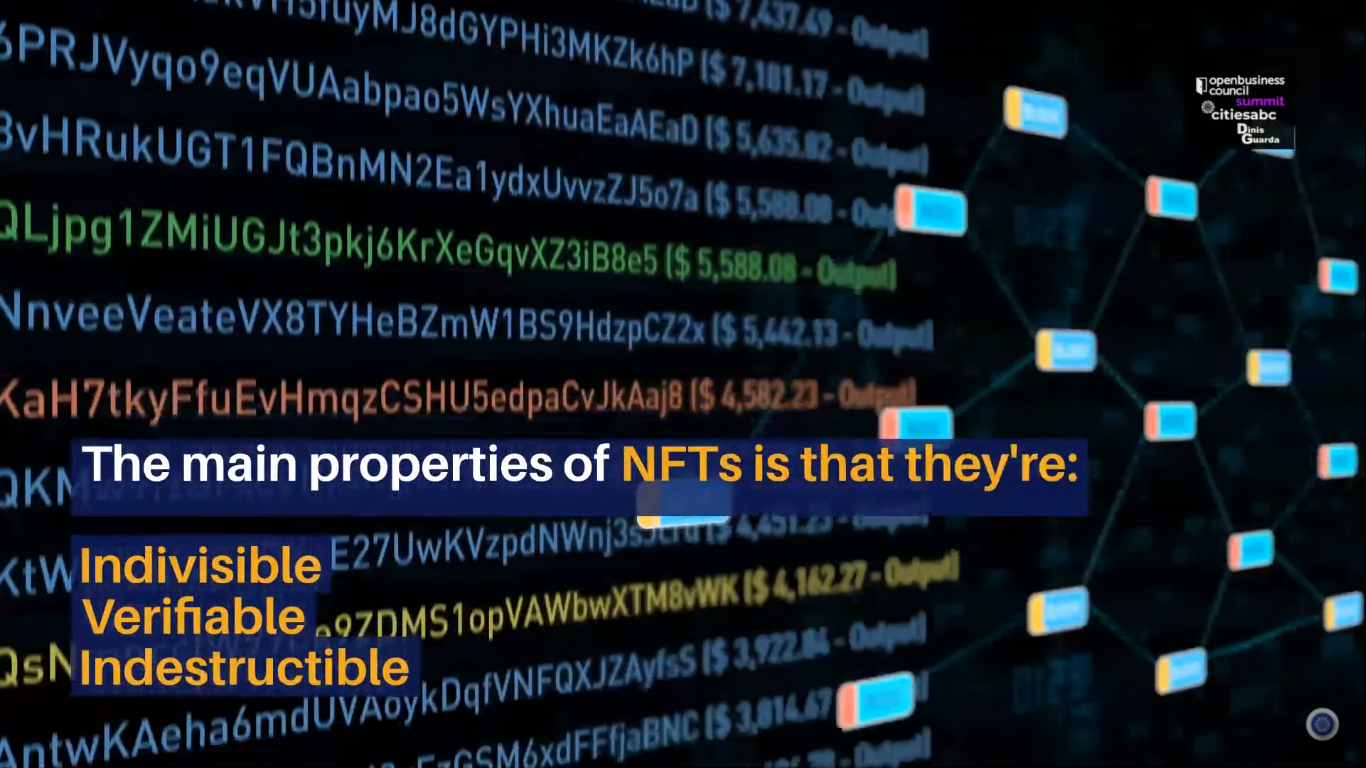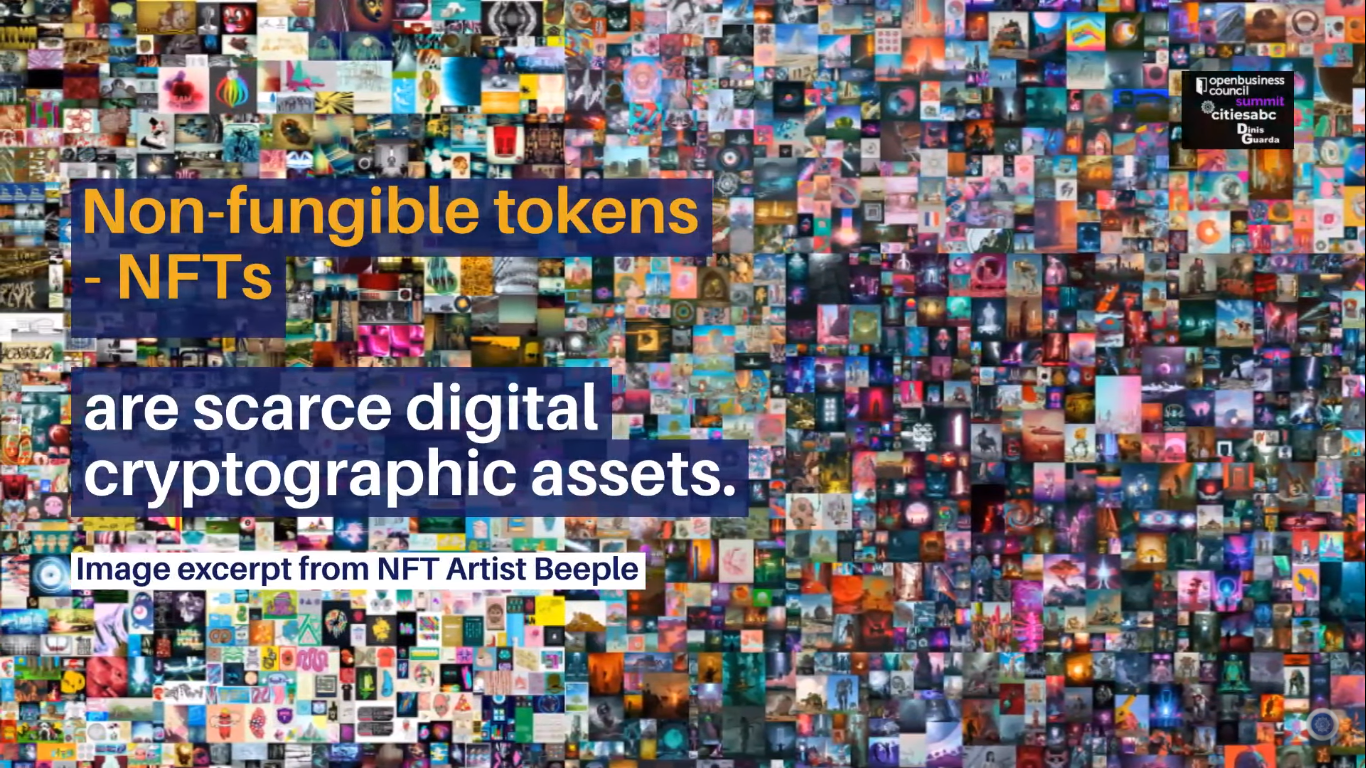Is a perfect copy of one of a Picasso, Rembrant, or a Van Gogh’s painting worth the same as the real thing? Non-fungible tokens – NFTs create digital scarcity for art pieces and collectives where there was none. The lack of digital scarcity in the creator economy is one of the main reasons people have slowly but surely been gravitating to NFTs as a possible solution. Let’s take a deeper look at what exactly is NFTs Art and some promising developments.
One of the fundamental characteristics of the internet is the zero marginal cost to replicate something, which is actually beneficial for creators to keep control of their intellectual property, but not really interesting if that creator wants something to be scarce.
Non-fungible tokens – NFTs are scarce digital cryptographic assets. This means that NFTs are unique digital assets that run on the same technology (blockchains) as cryptocurrency but are fundamentally different.
As we said, Bitcoin is fungible. That means they are equal in value and interchangeable. There’s a clear record of each bitcoin but one bitcoin equals one bitcoin, no matter who owns it. Unlike bitcoin, no NFT is the same.
A good example to picture how NFT works is the Ticket Analogy: each ticket – NFT contains specific information including the purchaser’s name, the date of the event and the venue, which makes it impossible for tickets to be traded with one another.
As Nikhilesh De, expert in crypto said for coindesk: “NFTs are basically digital collectibles. They can represent things (like tweets, real estate, real-world assets, etc.) or they can be the things (like art). Their value proposition is that they are digitally unique, they exist on a blockchain (like Ethereum) and while anyone can copy and download video clips or image files, an NFT has a record saying that it has only one owner.”
As of now, NFTs are still in its infancy, although there are promising players already researching this technology. The main player in the space is crypto runner-up Ethereum, but other blockchains and protocols have begun getting involved too, such as Valor and the Opium Network.
The main properties of NFTs
Indivisible: NFTs can’t be broken down into fractions, unlike Crypto. In other words: you either own a whole NFT, or you don’t own it at all.
Verifiable: Each NFT is unique and comes with a unique identifier that specifies who owns it, when they bought it, and from whom.
Indestructible: NFTs leverage blockchain and smart contracts technology, which means ‘they cannot be destroyed, removed or replicated.

What NFTs mean for creators and artists
The benefits are great, especially for creators and artists. NFTs can be designed to pay their creators a cryptocurrency fee every time they change hands. If for example a buyer of NFT of the creator’s pieces resells it, the creator automatically receives 10 percent of the price paid. The lack of digital scarcity in the creator economy is one of the main reasons people have slowly but surely been gravitating to NFTs as a possible solution. And in recent months, that interest grew exponentially.
That is why NFTs can empower individuals to become more important than the institutions surrounding them. The clearest example of this is how NFTs can help creators (previously on an institution’s distribution, or an ad-based model, or platforms such as Substack) capture a larger share of the profits of whatever they create and sell. When creators use an institution to distribute their content, they only get a small portion of the profits. The most clear example of this is book authors signing deals with large publishers, or musicians with record labels.
In fact, in 2020 alone, NFT trading as a whole was worth $250 million, a +300% growth from the year prior. Crypto art alone has surpassed $100 million in worth so far this year. This activity, and the growth of NFTs as a whole, can be easily attributed (at least in part) to communities circling around Discord servers, two European examples being the Utopia Genesis Foundation server, and the NFTlondonUK server.
NFTs (especially those that make up digital art) can be bought and sold in what are called ‘NFTs Marketplaces’ like Niftygateway, SuperRare and OpenSea.
Some artists from the creative industries that are using NFTs are Kings of Leon, who launched an album as NFT and Basketball collectives; Grimes, a Canadian musician, singer, songwriter, record producer, music video director, and visual artist, who sold around $5.8 million worth of digital artworks, and a series of 10 pieces went up for sale on Nifty Gateway on February 28th or Beeple, a digital artist and graphic designer, known for creating a Flying Lotus video and concert visuals for Nicki Minaj and Eminem, who sold an Art NFT crypto sale for $3.5 million. Other artists are Blake Kathryn, Giant Swan and Dream Catcher Auction by Steve Aoki x Antoni Tudisco, among others.

NFTs Regulation
NFTs are still quite a new invention, which means there is no clear regulatory framework around them, but instead are subject to national and international laws (depending on exactly what use case you’re dealing with.)
Both European and US regulators are starting to develop these regulatory frameworks, but nothing concrete has come out yet. In the US, the SEC considers all tokens (fungible or not) equivalent to securities, and are starting conversations with people in the space on how to best deal with them.
The EU, on the other hand, recently partnered with US-based blockchain company ConsenSys to launch a EU Blockchain Observatory and Forum. Some EU countries, such as Switzerland, Germany, Estonia and Malta have issued ICO-related guidance or legislation.
NFTs can radically change the way art is created and distributed, making it a fairer sector for creators. Although still in its infancy digital arts NFTs and other crypto collectives have exploded and the growth potential is still off the charts.

Dinis Guarda is an author, academic, influencer, serial entrepreneur, and leader in 4IR, AI, Fintech, digital transformation, and Blockchain. Dinis has created various companies such as Ztudium tech platform; founder of global digital platform directory openbusinesscouncil.org; digital transformation platform to empower, guide and index cities citiesabc.com and fashion technology platform fashionabc.org. He is also the publisher of intelligenthq.com, hedgethink.com and tradersdna.com. He has been working with the likes of UN / UNITAR, UNESCO, European Space Agency, Davos WEF, Philips, Saxo Bank, Mastercard, Barclays, and governments all over the world.
With over two decades of experience in international business, C-level positions, and digital transformation, Dinis has worked with new tech, cryptocurrencies, driven ICOs, regulation, compliance, and legal international processes, and has created a bank, and been involved in the inception of some of the top 100 digital currencies.
He creates and helps build ventures focused on global growth, 360 digital strategies, sustainable innovation, Blockchain, Fintech, AI and new emerging business models such as ICOs / tokenomics.
Dinis is the founder/CEO of ztudium that manages blocksdna / lifesdna. These products and platforms offer multiple AI P2P, fintech, blockchain, search engine and PaaS solutions in consumer wellness healthcare and life style with a global team of experts and universities.
He is the founder of coinsdna a new swiss regulated, Swiss based, institutional grade token and cryptocurrencies blockchain exchange. He is founder of DragonBloc a blockchain, AI, Fintech fund and co-founder of Freedomee project.
Dinis is the author of various books. He has published different books such “4IR AI Blockchain Fintech IoT Reinventing a Nation”, “How Businesses and Governments can Prosper with Fintech, Blockchain and AI?”, also the bigger case study and book (400 pages) “Blockchain, AI and Crypto Economics – The Next Tsunami?” last the “Tokenomics and ICOs – How to be good at the new digital world of finance / Crypto” was launched in 2018.
Some of the companies Dinis created or has been involved have reached over 1 USD billions in valuation. Dinis has advised and was responsible for some top financial organisations, 100 cryptocurrencies worldwide and Fortune 500 companies.
Dinis is involved as a strategist, board member and advisor with the payments, lifestyle, blockchain reward community app Glance technologies, for whom he built the blockchain messaging / payment / loyalty software Blockimpact, the seminal Hyperloop Transportations project, Kora, and blockchain cybersecurity Privus.
He is listed in various global fintech, blockchain, AI, social media industry top lists as an influencer in position top 10/20 within 100 rankings: such as Top People In Blockchain | Cointelegraph https://top.cointelegraph.com/ and https://cryptoweekly.co/100/ .
Between 2014 and 2015 he was involved in creating a fabbanking.com a digital bank between Asia and Africa as Chief Commercial Officer and Marketing Officer responsible for all legal, tech and business development. Between 2009 and 2010 he was the founder of one of the world first fintech, social trading platforms tradingfloor.com for Saxo Bank.
He is a shareholder of the fintech social money transfer app Moneymailme and math edutech gamification children’s app Gozoa.
He has been a lecturer at Copenhagen Business School, Groupe INSEEC/Monaco University and other leading world universities.




























